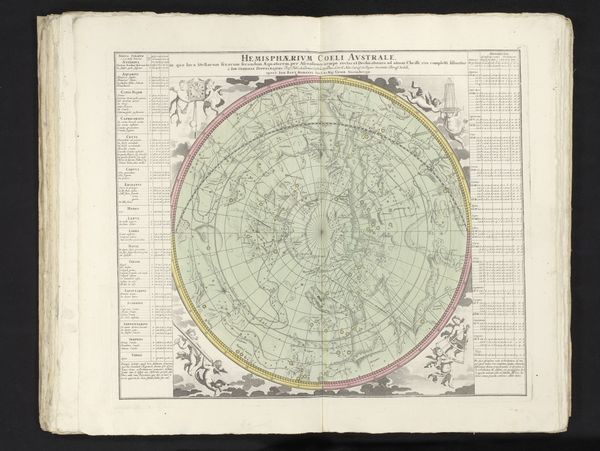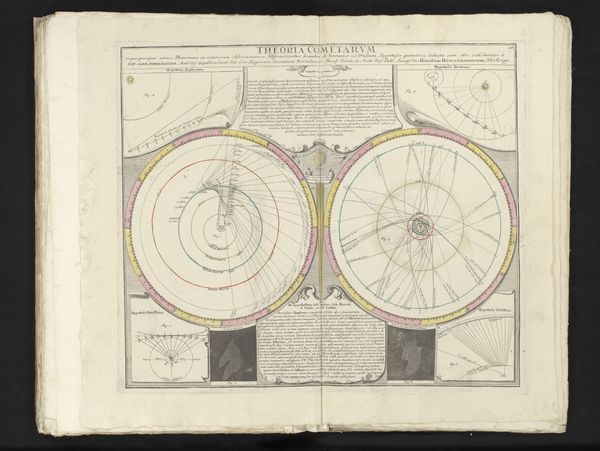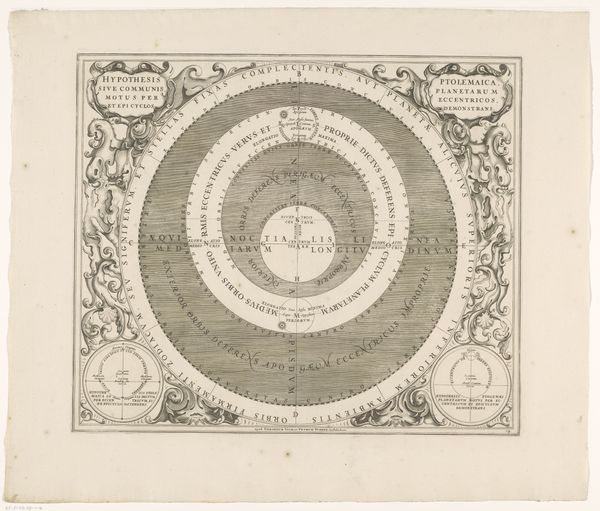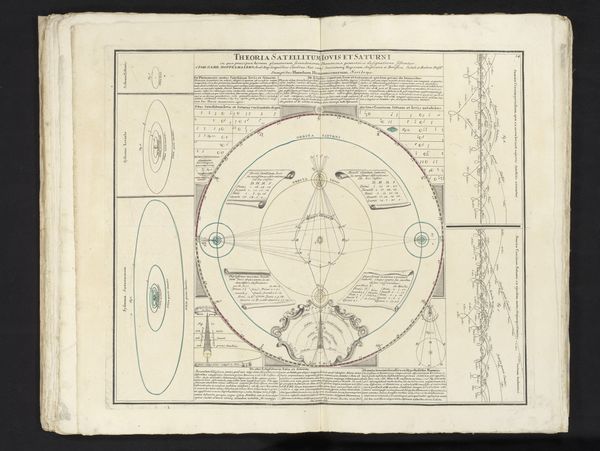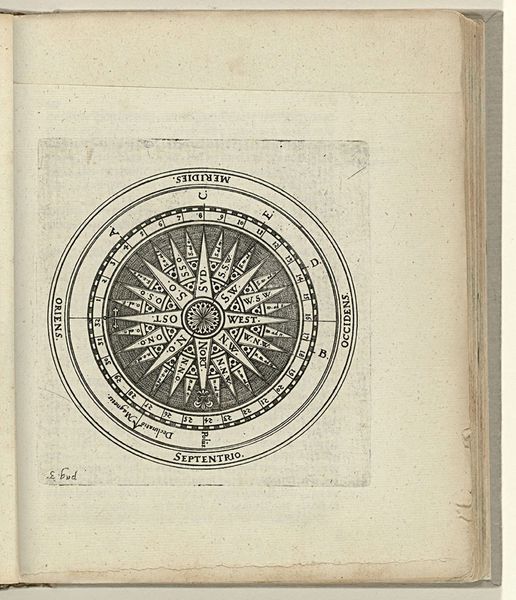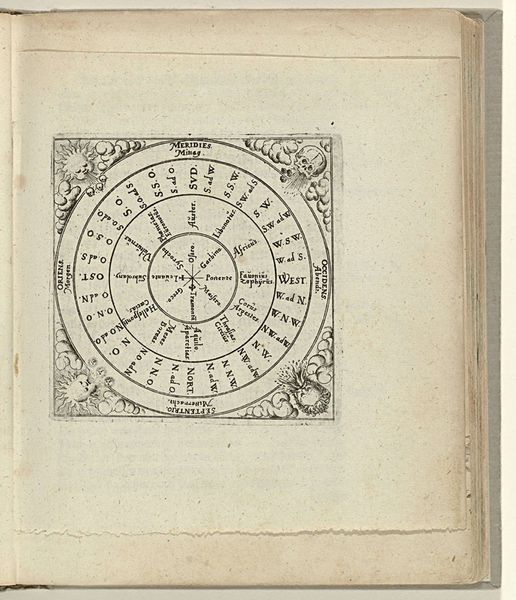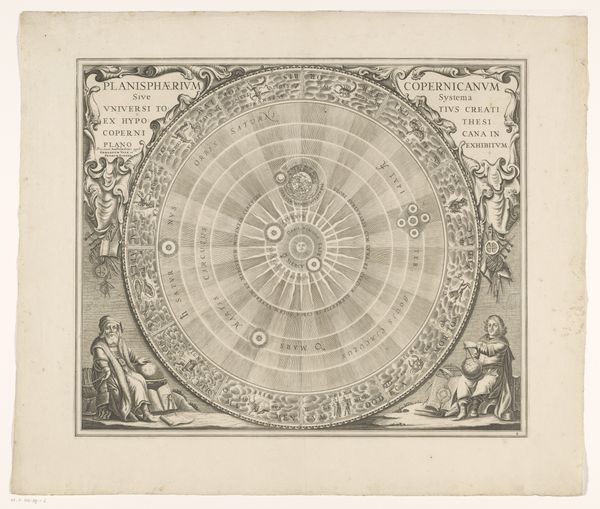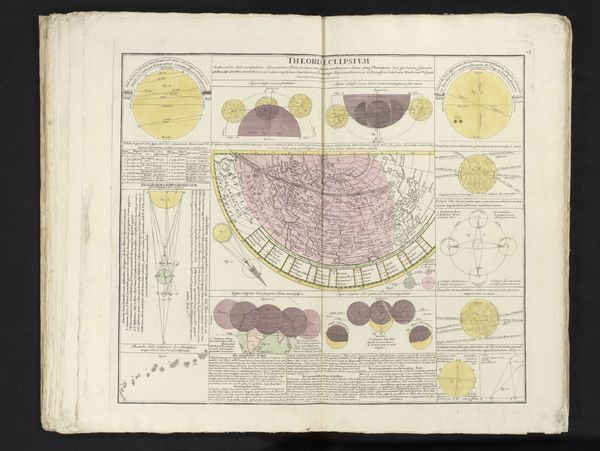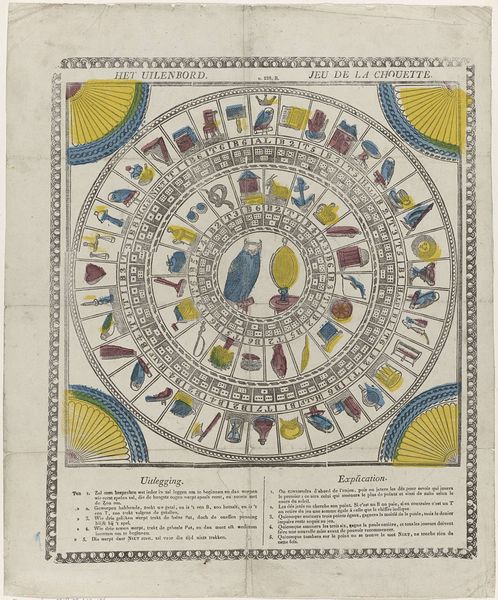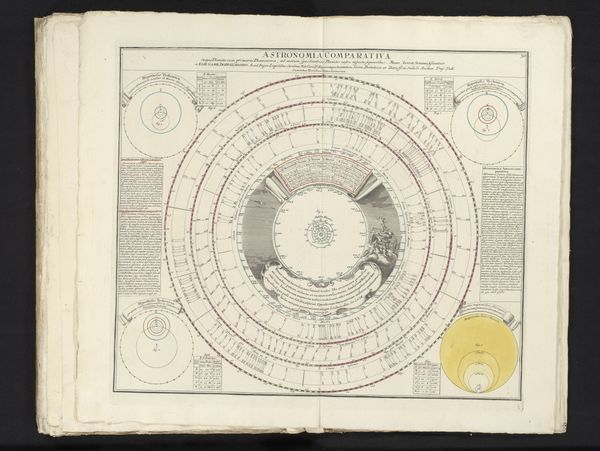
Dimensions: height 504 mm, width 573 mm
Copyright: Rijks Museum: Open Domain
Editor: This is an engraving titled "Eeuwigdurende juliaanse kalender," or Perpetual Julian Calendar, made on paper sometime between 1757 and 1777. It’s circular, almost like a wheel, filled with text. It makes me wonder, how useful was this as a tool? And what does it represent culturally? What do you see in this piece? Curator: Well, at first glance, it looks like a purely scientific or mathematical object. But stepping back, consider the political and social order that needed such intricate calendars. It suggests a world obsessed with control – control over time, religious observances, and agricultural cycles. Who benefitted from such precise measurement and codification? Editor: That's interesting. So, the calendar isn't just about timekeeping but also about power? Curator: Exactly. Think about how the Julian calendar itself was implemented – a top-down restructuring of time under Roman emperors. Then, consider its perpetuation in different empires or nations. The "who," "why," and "for whom" become very potent questions. What social or religious systems are supported and maintained through the construction of time? Editor: I see. So, each ring, each inscription represents someone’s idea about history and purpose? It makes me think of the various power structures imposing order during this Baroque era. Curator: Precisely. The visual organization mirrors societal structures – hierarchical, regulated. Look closer at what information is included, what is excluded, and whose knowledge is prioritized. Editor: I never considered a calendar as anything beyond organizing days, but I understand what you mean about a constructed sense of order and power. It seems that visual tools, like this, reflect and reinforce established systems. Curator: And challenging the accepted ordering through the calendar provides avenues for challenging its societal structures as well.
Comments
No comments
Be the first to comment and join the conversation on the ultimate creative platform.

